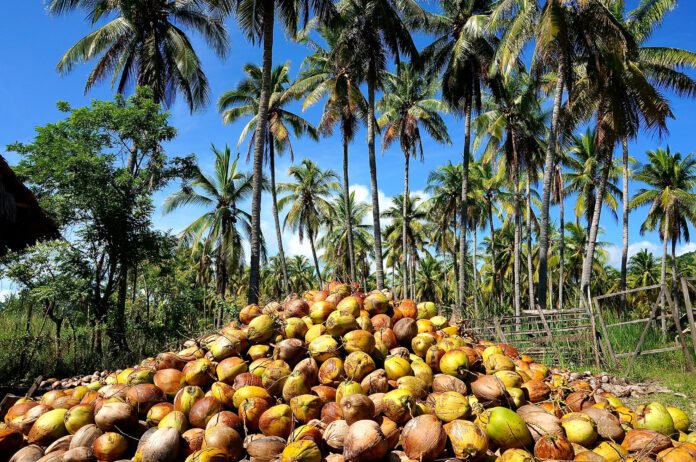The El Niño weather pattern is forecasted to decrease the Philippines’ coconut oil exports by about one-fifth in the market year 2024-2025 to 900,000 metric tons (MT), according to a global agency.
The United States Department of Agriculture-Foreign Agricultural Service in Manila (USDA-FAS Manila) mentioned that drier weather conditions would impact coconut flower growth, leading to a drop in coconut output.
This decline in coconut output would result in a reduced supply of copra used for coconut oil production, affecting the country’s exports of this valuable commodity.
The USDA-FAS Manila noted that the effects of El Niño would be felt in the market year 2024-2025, starting in October, as coconut production typically takes about a year.
Their estimates suggest that the Philippines’ coconut oil exports in market year 2024-2025 would decrease by 21 percent to 900,000 MT from the projected volume of 1.14 million MT in the current market year 2023-2024.
Referring to the Philippine Coconut Authority, the agency stated that the impact of El Niño would become visible “13 months after the end of the drought.”
The USDA-FAS Manila reported that as of late February, approximately 46 coconut-producing provinces were affected by El Niño, according to government and industry data.
They also mentioned that 62 oil mills across 10 regions nationwide, with a total milling capacity of 3.685 million MT, are affected by the weather disturbance.
The agency highlighted that areas with dry conditions, spells, and droughts would see lower coconut production, affecting the supply to oil mills in those regions.
About 80 percent of copra produced in the country is used for coconut oil production, according to industry stakeholders cited by the USDA-FAS Manila.
The agency projected a 15 percent year-on-year decline in the country’s coconut oil production to 1.57 million MT from 1.85 million MT, with copra production estimated at 2.5 million MT, down by 15 percent from 2.94 million MT.
Apart from El Niño, the USDA-FAS Manila noted that strict European Union (EU) regulations would also contribute to the drop in coconut oil exports from the Philippines.
Local oil millers are expected to face challenges initially in meeting the EU’s requirements for lower mineral oil saturated hydrocarbons (MOSH) and mineral aromatic hydrocarbons (MOAH) in exported coconut oil, the agency explained.
The current practice of drying copra involves smoking, which increases the contamination of MOSH and MOAH in coconut oil.
The Philippines remains the world’s leading producer and exporter of coconut oil.





